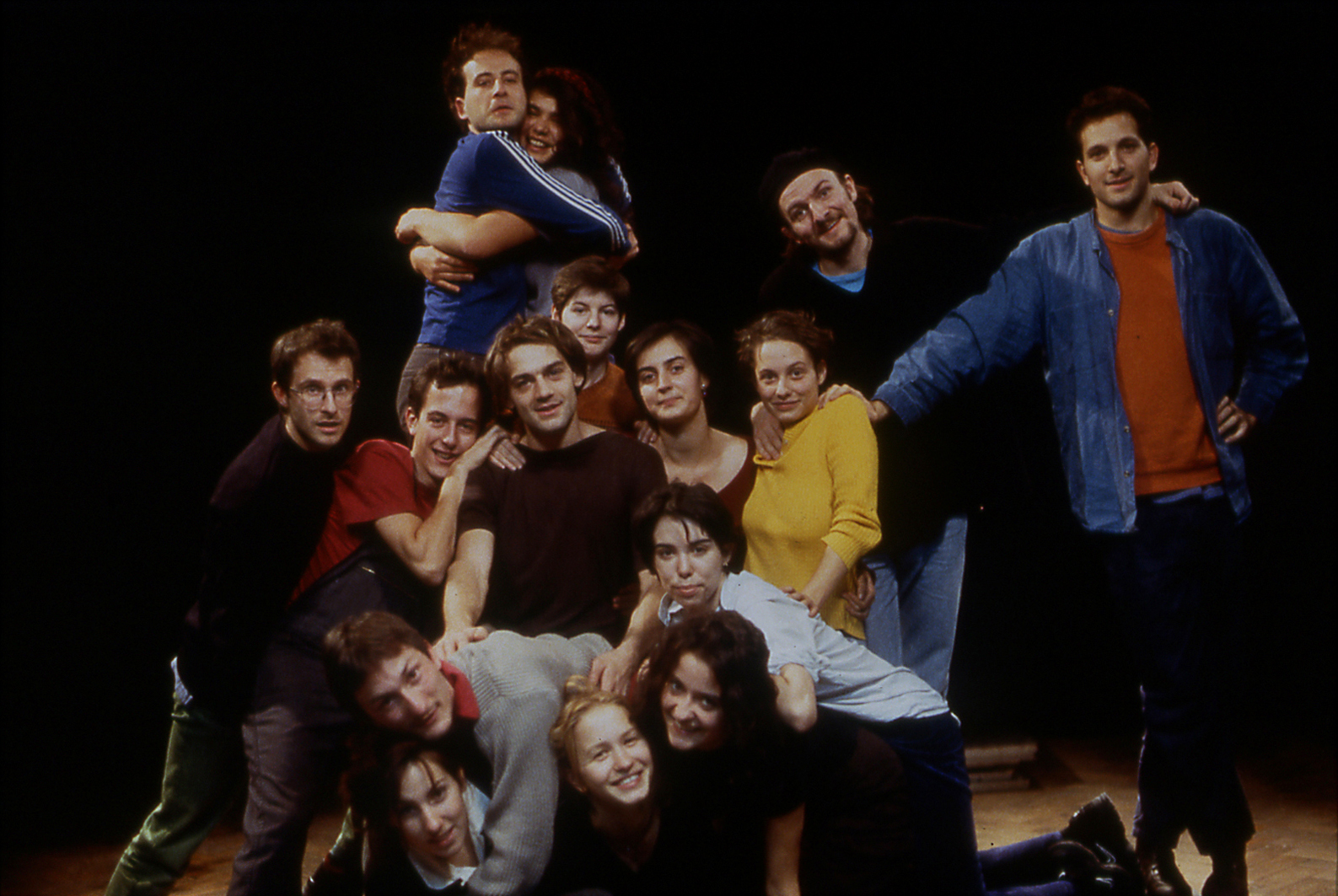Jean-Michel Frodon / La Monde – September 1999
The film begins, on a winter evening, with the actors’ arrival in the decommissioned military hut that the TNS (1) is using while its premises are being renovated. The story is that of a night during which the students will present to each other the results of their investigations in Strasbourg and try to make them into a show. This night – recreated by and for the cinema, of course, a dreamed night, intercut with arguments, fits of laughter, magnificent or outlandish ideas, empty moments, divisions and reunions – forms the film’s screenplay.
This screenplay doesn’t tell the story of class 30 of the TNS, the “subject” of the film, nor that of Strasbourg, “subject” of the students’ fifteen investigations, but the story of democracy. The story of “how we do something together”. From the creation of a collective group – bodies, words and imagination. Singing and dancing, food and sleep also have their role to play in it. Rituals too. It gradually falls into place, not at all with the flat symbolism of a demonstration but by building up singular and different characters.
We’re still close enough to the stage to think of Brecht in this parable of the community that, beneath its raw documentary aspects, leaves enough room for everyone’s inventiveness (including the director’s) to escape the hellish paradox of this commission: without ignoring the obligation to show each student “equally”, the internal dynamics of this night offer each one of them a place. They are not equal, they are unique and respected as such by the film. Nicolas Philibert’s great talent and his great respect for people – those he films and those who watch his film – have enabled him to model this imaginary object from the stuff of reality with its light, merry and moving forms, baptised Qui sait ?
